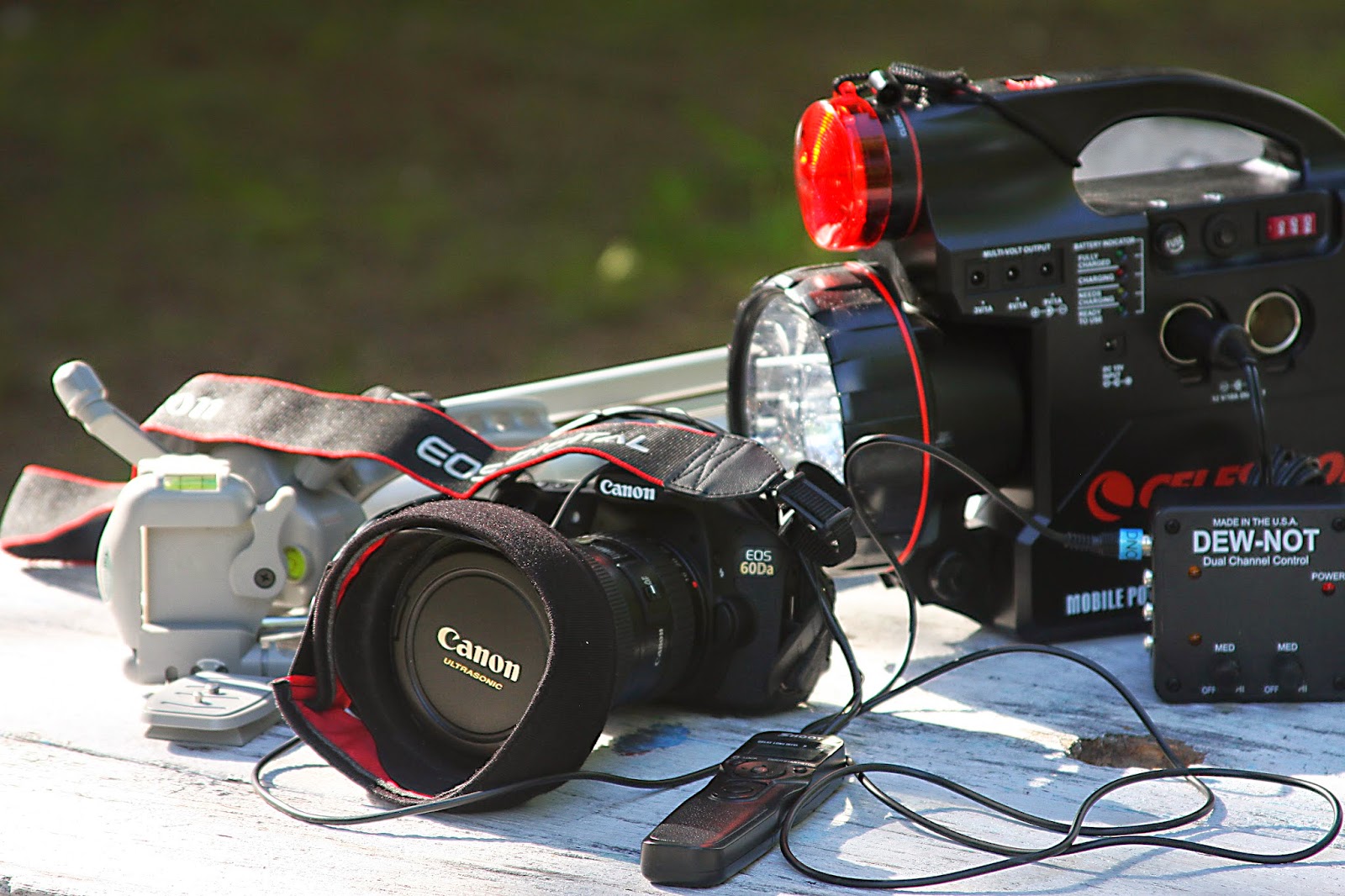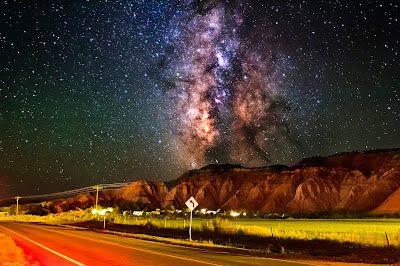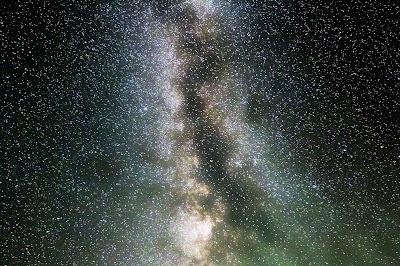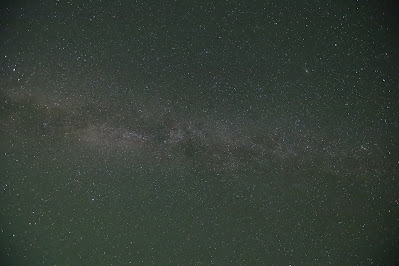 |
| Different types of the Milky Way Night Landscape Astrophotography - Stair Sail and Arch |
Astrophoto from Brooklyn New York, NYC and astrophotography tourism. I like astronomy, astrophotography and nightscape, starscape photography. I like to record the finest details of the Moon, planets, the Sun, the Milky Way and beauty of the night sky. Telescopes: Celestron NexStar 4SE, Coronado Solarmax II 60. Digital Cameras: Canon EOS Ra, 60Da and 40D. CCD: NexImage, NexImage 5. Lens: Canon EF 16-35mm f/2.8L II, Canon EF 200mm f/2.8 L II USM Telephoto USM
Monday, October 17, 2016
Different types of the Milky Way Night Landscape - Stair Sail and Arch
Sunday, October 6, 2019
Southern Hemisphere Astrophotography
Magellanic Clouds are visible to the unaided eye in the Southern Hemisphere.
Bolivia Night Sky with Magellanic Clouds (two irregular dwarf galaxies) and Red AirGlow near horison. Hotel Tayka del Desierto (Ojo de Perdiz). Altitude about 4600 m / 15000 feet.
 |
| Southern Hemisphere Astrophotography Magellanic Clouds Bolivia |
Two cloud-like patches of light are the neighbouring galaxies known as the Large Magellanic Cloud and the Small Magellanic Cloud. They are about 170,000 light years away and the Large Magellanic Cloud contains about 10,000 million stars. These are the closest galaxies to our own and are a stunning sight whether viewed with the naked eye, binoculars or a telescope. They are considered to be satellite galaxies linked by gravity to the Milky Way.
 |
| Southern Hemisphere Astrophotography: Magellanic Cloud, Southern Cross, Alpha and Beta Centauri, Milky Way - Chile |
Part of the Milky Way Panorama
 |
| Southern Hemisphere Astrophotography - Colors of Night Sky |
 |
| Southern Hemisphere Astrophotography - Chile Astrophotography |
 |
| Southern Hemisphere Milky Way Panorama - Bolivia Astrophotography |
 |
| Southern Hemisphere Milky Way Mountain Bolivia Astrophotography |
Thursday, July 24, 2014
Canon 60Da Milky Way Tripod Ultra Wide Angle Astrophotography Summer Triangle
 |
| Canon 60Da Milky Way Ultra Wide Angle Astrophotography Summer Triangle Tripod Catskills Upstate NY New York |
 |
| Canon 60Da setting |
Milky way - Canon 60Da, Ultra Wide Angle Canon Lens EF 16 35mm f2.8L II U, Fixed Tripod; F2.8, ISO 12800, exposure time 9 seconds for one shot, total about 20 min. Photo stacked in DeepSkyStacker.
 |
| Canon 60Da Astrophotography - Tripod, Timer Remote and anti-Dew Dew-Not |
There is annotated wide field astrophoto
 |
| Wide Field Astrophotography Canon 60Da Milky Way - annotated |
Wednesday, November 11, 2020
A Tree and the Milky Way
Earth has 3 trillion trees and our Milky Way has approximately 400 billion stars. There are more trees on Earth than stars in the Milky Way galaxy!
 |
| A Tree and the Milky Way |
Canon Ra, 10 Sec, ISO 16000, EF16-35mm f/2.8L II USM, f/2.8. The Summer Triangle (Vega, Deneb and Altair stars) is visible on this photo.
Sunday, November 12, 2023
Alaska Astrophotography - Cosmic Symphony
Alaska, the "Last Frontier", is renowned for its pristine wilderness, vast landscapes, and breathtaking night skies. In August, when the days are still long but the nights begin to reveal their celestial wonders, I embarked on a photographic journey. This photo was done about midnight during remarkable night in Alaska, where the Milky Way, the Big and Little Dipper, Cassiopeia, and the Andromeda Galaxy took center stage amidst the backdrop of a tranquil forest and towering mountains.
 |
| Alaska Astrophotography - Milky Way, Big and Little Dipper, Cassiopeia and Andromeda Galaxy |
Under the captivating beauty of the Milky Way, with a glacier river winding through the mountains and a mysterious boat on its shores, will forever remain etched in my memory. It is a testament to the awe-inspiring landscapes that Alaska offers to those willing to venture into its remote corners. The photograph serves as a reminder of the incredible beauty that can be found in nature and the magic that can unfold on a single night in this pristine wilderness.
 |
| Alaska Travel Night Landscape Astrophotography |
The photograph stands as a visual symphony, combining Earth's terrestrial wonders with the infinite cosmos, creating a breathtaking portrayal of the universe's grandeur.
 |
| Alaska Astrophotography Milky Way Cygnus Lira Aquila Constellations |
Canon EOS Ra, EF16-35mm f/2.8L II USM Lens, f/2.8
Thursday, October 20, 2022
Joshua Tree National Park Night Landscape
Continue previous posts about my trip to Joshua Tree National Park.
Canon EOS Ra, EF16-35mm f/2.8L II USM Lens, f/2.8, ISO 25600, 3 sec, Panorama
 |
| Three Sisters and Milky Way Joshua Tree National Park |
The park is located far from any major cities, which means that the night sky is incredibly dark and clear. On a clear night, visitors can see up to 15,000 stars, as well as the Milky Way and other celestial objects. The park even offers astronomy programs and events throughout the year.
Canon EOS Ra, EF16-35mm f/2.8L II USM Lens, f/2.8, ISO 25600, 3 sec, Panorama
 |
| Milky Way Joshua Tree National Park |
Joshua Tree National Park is a popular destination for outdoor enthusiasts, nature lovers, and photographers alike. One of the most unique and rewarding photography experiences in the park is astrophotography. With its clear skies and minimal light pollution, Joshua Tree is the perfect place to capture stunning images of the night sky.
Canon EOS Ra, EF16-35mm f/2.8L II USM Lens, f/2.8, ISO 25600, 3 sec
 |
| Night Landscape Joshua Tree National Park |
Canon EOS Ra, EF16-35mm f/2.8L II USM Lens, f/2.8, ISO 25600, 3 sec
 |
| Night Sky Joshua Tree National Park |
 |
| Joshua Tree and Milky Way |
The Joshua tree is a member of the Agave family and is a type of yucca plant. It has a distinctive, spiky appearance, with thick, twisting branches that reach upwards of 40 feet tall. The tree's trunk is usually short and thick, and it has green, sword-shaped leaves that grow in clusters at the ends of its branches.
 |
| Sky and Earth Joshua Tree National Park |
Thursday, October 10, 2013
Wednesday, September 16, 2015
Milky Way over Sunset Point of Bryce Canyon - Astrophotography
Not a sunrise, but a galaxy rise.
A morning filled with 400 billion suns, the rising of the milky way.
Carl Sagan
This photo is from my trip to Bryce Canyon. It is continue my serious of night sky photos from National Parks. Bryce Canyon night sky is really very dark – you can see it from photo where the starry sky has natural green color – result of Airglow.
Photo is panorama of 7 shots; it is done in Sunset Point – Milky Way over Hoodoos. Duration of one shot was 30 seconds, Camera – Canon 60Da, Wide Angle EF 16-35mm f/2.8L II USM Lens, F/3.5; ISO 6400.
 |
| Milky Way over Sunset Point of Bryce Canyon - Astrophotography |
Thursday, July 10, 2014
Canon 60Da Milky Way Astrophotography Catskill Mountains Upstate NY New York
Canon 60Da, Canon EF 16-35mm f/2.8L II USM Ultra Wide Angle Lens, Exposure time 9 sec, F2.8, ISO 12800
 |
| Canon 60Da Milky Way Astrophotography Catskill mountains |
 |
| Canon 60Da Milky Way Astrophotography Upstate NY New York |
Tuesday, October 6, 2015
Utah Astrophotography
If we do not destroy ourselves,
we will one day venture to the stars.
--Carl Sagan
Utah is one of the best places for landscape Astrophotography in USA and maybe one of top 10 in the word. It has true and excellent amazing dark sky.
 |
| Utah Astrophotography - Milky Way and Airglow over Road |
 |
| Eruption of Milky Way Utah Landscape Astrophotography |
 |
| Airglow and Milky Way Utah Landscape Astrophotography |
 |
| Night Parking Utah Landscape Astrophotography |
 |
| Natural Color of Night Sky - Airglow and Big Dipper Utah Astrophotography |
 |
|
Night sky observation with the Astronomy Rangers at Bryce
Canyon National Park
|
 |
| Martian landscape from Bryce Canyon |
 |
| Milky Road |
 |
| Utah Backyard Astrophotography |
Tuesday, September 17, 2019
Bolivia Astrophotography - Salar de Uyuni at Night
Canon EOS 60Da, 30 sec., Canon Lens EF16-35mm, f/2.8, ISO 6400, panorama of night sky.
 |
| Bolivia Astrophotography - Salar de Uyuni at Night |
With 10,582 km^2, more than 10 billion tons of salt and containing up to 70% of the world’s lithium reserves, Salar de Uyuni is the world’s largest salt flat, a vast salt plain near the crest of the Andes in southwest Bolivia has amazing, fantastic night sky view!
 |
| Salar de Uyuni Milky Way Bolivia Astrophotography |
 |
| Southern hemisphere night sky Milky Way Bolivia Astrophotography |
Wednesday, November 2, 2022
Rainbow Milky Way Joshua Tree National Park
Saturday, October 18, 2014
Grand Teton National Park Nightscape Astrophotography Colter Bay Village Starry Sky Canon 60Da
 |
| Grand Teton National Park Nightscape Astrophotography Colter Bay Village Starry Sky Canon 60Da |
 |
| Night Sky Grand Teton - Canon 60Da |
 |
| Grand Teton Starry Night Sky |
 |
| UFO Cloud and Milky Way Grand Teton Astrophotography Night Sky Canon 60Da |
 |
| Starry Sky Reflection Grand Teton Astrophotography |
 |
| Night Sky Grand Teton Milky Way Astrophotography |
 |
| Milky Way and Colter Bay Cabin Astrophotography |
There is YouTube video









